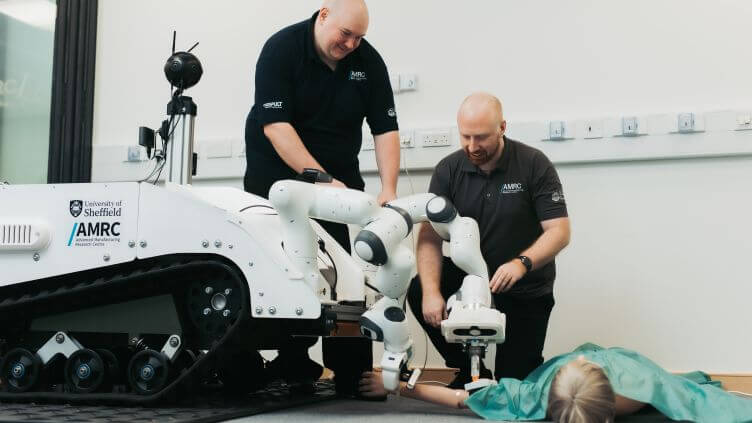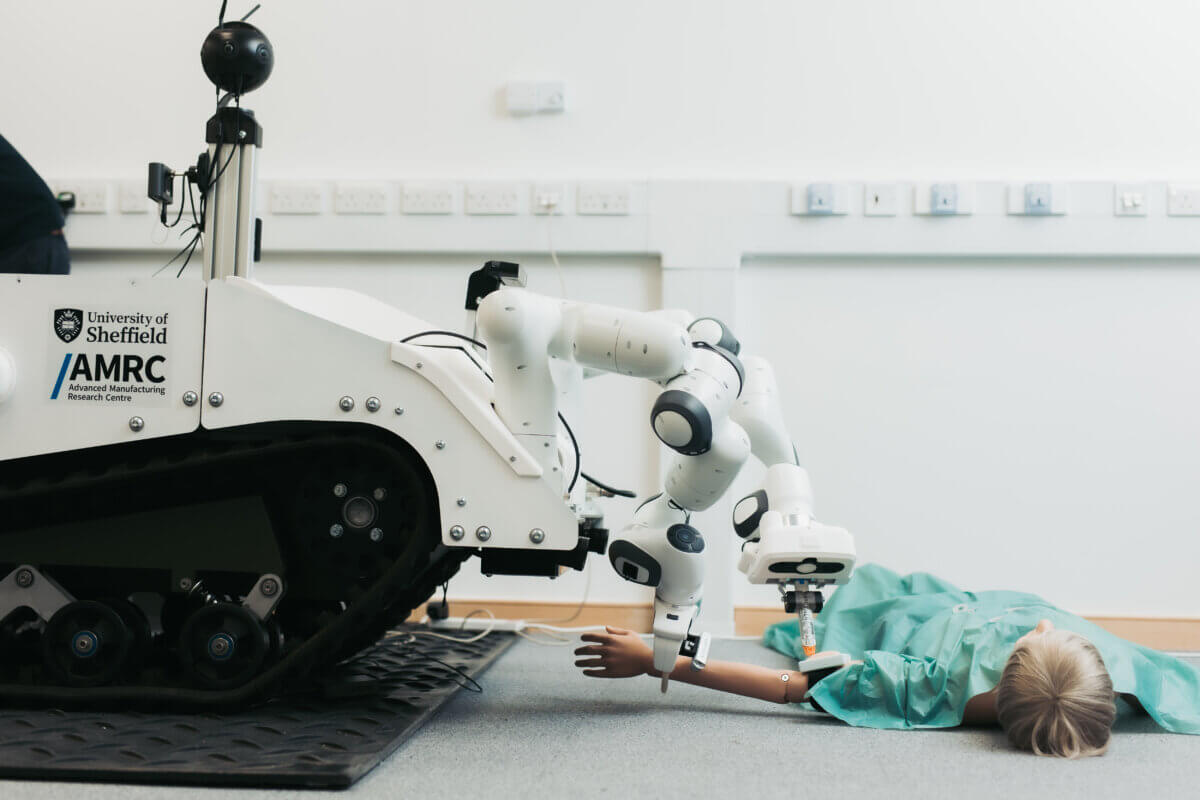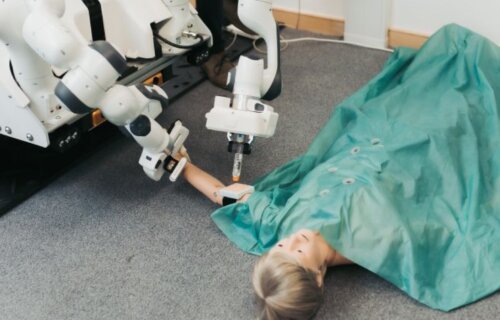SHEFFIELD, United Kingdom — The next time someone screams “is there a doctor in the house?” don’t be surprised if a machine raises its arm. A cutting-edge, Thunderbirds-style robotic medic could be a lifesaver in dangerous environments where it is too risky for human doctors to operate. The remote-controlled, robotic vehicle utilizes virtual reality to allow medical professionals to measure a patient’s temperature, blood pressure, and heart rate, and even administer injections — all without placing themselves in harm’s way.
This transformative technology, developed by a team at the University of Sheffield, could prove vital in high-risk emergency environments such as war zones and humanitarian disaster areas.
The research team, comprising members from the University’s Advanced Manufacturing Research Centre (AMRC), Sheffield Robotics, and the Department of Automatic Control and Systems Engineering, created the unmanned ground vehicle (UGV) using medical telexistence (MediTel) technology.
The UGV is equipped with virtual reality (VR) capabilities that allow medics and operators to evaluate critical casualties in hazardous conditions, providing them the opportunity to perform remote triage while ensuring their own safety.
This first-of-its-kind, fully integrated medical telexistence system was developed in a span of nine months. The vehicle features two robotic arms that can effectively operate medical tools remotely to perform an essential initial assessment of a casualty within 20 minutes.
This preliminary examination includes checking the patient’s temperature, blood pressure, and heart rate. Moreover, the robot can perform an abdominal palpation and administer pain relief via an auto-injector, all while streaming real-time data back to the remote operator.

“Our MediTel project has demonstrated game-changing medical telexistence technology that has the potential to save lives and provide remote assessment and treatment of casualties in high-risk environments such as humanitarian disasters,” says David King, Head of Digital Design at the AMRC, in a university release.
“Developing and field testing a state-of-the-art, complex system such as MediTel in just nine months has been an incredible achievement and a testament to the skills and capabilities of the entire project team.”
“MediTel combined existing medical devices with state-of-the-art robotics systems to develop a platform capable of allowing a remote operator to navigate through potentially difficult terrain and provide critical diagnoses of high-risk casualties,” King adds.
“This project has allowed us the opportunity to develop a platform that could be used by multiple emergency response services. It now serves us with the basis for our research to be extended and look into enabling resilient autonomy and integrating other sensing modalities to assist patient triage in other remote settings,” says Professor Sanja Dogramadzi, director of Sheffield Robotics.

MediTel was one of three novel telexistence technologies that received funding from a multi-million-dollar competition, run by the Defense and Security Accelerator (DASA) on behalf of joint funders, the Defense Science and Technology Laboratory (Dstl) and the Nuclear Decommissioning Authority (NDA).
“Telexistence technologies have the potential to remove end users from harmful environments and/or rapidly insert specialists as required,” explains Dr. Nicky Armstrong, technical lead at Dstl.
“The prototype technologies developed under the Dstl Telexistence project have enabled us to demonstrate the art of the possible to end users, so that we can better understand where telexistence could add value to defense and security environments.”
Now, the Sheffield team is preparing to build on their project’s success. They’re seeking further funding and partners to realize the potential of MediTel medical telexistence technology. The scientists hope this will revolutionize the way doctors handle medical triage in dangerous or unsafe areas.
The team is also examining the creation of a large-scale integrated medical emergency platform capable of rapidly deploying aid during humanitarian disasters.
South West News Service writer Stephen Beech contributed to this report.

